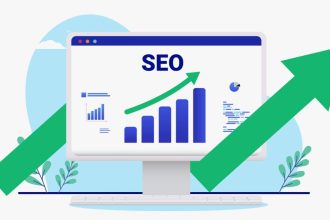Today is 09/18/2025 09:20:28 ()
The digital landscape, an ever-evolving tapestry of innovation, demands more than just functional products; it requires experiences that resonate deeply with users; In this fiercely competitive arena, where milliseconds dictate retention and intuitive interaction is paramount, the UX Design Process emerges not merely as a methodology but as the foundational blueprint for success. It’s the invisible architecture shaping our daily digital lives, transforming abstract ideas into tangible, delightful interactions. Without a meticulously crafted approach, even the most groundbreaking concepts risk faltering in the complex journey from inception to user adoption, ultimately failing to capture the imagination of their intended audience.
Today, on September 18, 2025, as we stand at the precipice of remarkable technological advancements, understanding and implementing a robust UX design framework has never been more critical. Industry leaders universally acknowledge that a strategic, user-centric process is the undeniable differentiator, fostering loyalty and driving unprecedented engagement. By integrating insights from cutting-edge AI and human behavioral psychology, this structured journey ensures that every click, every swipe, every interaction is intentionally designed to solve real problems and evoke genuine satisfaction. It is, unequivocally, the pathway to crafting interfaces users don’t just use, but truly love, propelling businesses into a future of unparalleled growth and user devotion.
| Phase | Description & Key Activities | Goal |
|---|---|---|
| 1. Empathize & Research | Deeply understanding users’ needs, behaviors, motivations, and pain points through user interviews, surveys, competitive analysis, and ethnographic studies. This foundational step involves gathering qualitative and quantitative data, acting much like a detective meticulously collecting clues. | To gain a profound, unbiased understanding of the target audience and their context, ensuring solutions are built on authentic human insights. |
| 2. Define & Analyze | Synthesizing research findings to articulate the core problem(s) to be solved. Creating user personas, journey maps, and clear problem statements, focusing rigorously on user goals and aligning them with overarching business objectives. | To clearly define the problem space and project scope, ensuring all stakeholders are aligned on the precise challenges needing resolution, akin to an architect finalizing the blueprint before construction. |
| 3. Ideate & Design | Brainstorming a wide array of potential solutions for the defined problems. This dynamic phase includes sketching, wireframing, creating user flows, and developing initial design concepts. Emphasis is placed on divergent thinking and creative problem-solving, much like a sculptor shaping raw material into form. | To generate innovative solutions and translate abstract ideas into tangible design concepts that address identified user needs effectively and elegantly. |
| 4. Prototype | Building interactive mock-ups or simulations of the design solutions. Prototypes range from low-fidelity (paper sketches) to high-fidelity (interactive digital models) to visualize and test interactions, providing a tangible experience without extensive development costs. | To create testable representations of the design, allowing for early feedback and iteration cycles, significantly reducing risks and rework later in the development process. |
| 5. Test & Validate | Conducting rigorous usability testing with real users to observe their interactions with the prototype, gather invaluable feedback, and identify areas for improvement. A/B testing, analytical reviews, and performance metrics are also crucial for comprehensive validation, mirroring a scientist validating hypotheses through experimentation. | To validate design assumptions, pinpoint usability issues, and refine the solution based on authentic user feedback, ensuring the product genuinely meets expectations. |
| 6. Iterate & Launch | Refining the design based on continuous testing feedback, often cycling back through previous steps in an agile fashion. After thorough validation, the product is prepared for launch, followed by continuous monitoring, A/B testing, and further improvements, treating the product as a living entity. | To continuously improve the product post-launch, ensuring it remains relevant, user-friendly, and incredibly effective, adapting to evolving user needs and market demands, much like tending a vibrant, growing garden. |
| Reference: For more in-depth insights into the UX Design Process, visit Nielsen Norman Group. | ||
The journey through the UX Design Process is akin to an architect meticulously planning a skyscraper. It commences with a profound commitment to understanding the future occupants. The “Empathize & Research” phase is where designers don their ethnographic hats, delving into user interviews, observing behaviors, and dissecting competitor offerings. This isn’t merely data collection; it’s an immersive quest to uncover latent needs and unspoken desires, forming the bedrock upon which truly revolutionary products are built. Without this critical groundwork, solutions risk becoming elegant but ultimately irrelevant, missing the mark on fundamental user requirements.
Following this deep dive, the “Define & Analyze” stage transforms raw observations into actionable strategies. Here, the disparate threads of research are woven into coherent narratives, yielding user personas that breathe life into target audiences and journey maps that illuminate every touchpoint. Expert practitioners, like those at IDEO, famously emphasize the importance of framing the right problem before attempting to solve it. This clarity ensures that every subsequent design decision is purposeful, directly addressing a validated user pain point or aspiration, thereby avoiding costly detours and fostering innovation that truly resonates.
The creative explosion occurs during “Ideate & Design.” This is where the canvas of possibility unfurls, allowing designers to brainstorm, sketch, and wireframe without inhibition. It’s a phase characterized by divergent thinking, where numerous solutions are explored before converging on the most promising paths. Companies pioneering digital transformation, such as Google with its design sprints, have masterfully leveraged this stage to rapidly generate and refine concepts. By encouraging diverse perspectives and fostering an environment of fearless experimentation, teams can unlock groundbreaking interfaces that delight and empower users in unexpected ways.
Critically, ideas only gain traction when tested. The “Prototype” phase bridges the gap between abstract concepts and tangible experiences. From low-fidelity paper prototypes allowing for quick, inexpensive iterations, to high-fidelity interactive models simulating real product usage, this step provides invaluable visual and interactive feedback. This iterative prototyping, as championed by countless Silicon Valley success stories, dramatically reduces development risks by identifying usability issues and refining interactions long before a single line of production code is written. It’s a proactive approach saving immense resources and accelerating market readiness.
Subsequently, “Test & Validate” is the crucible where design assumptions face the ultimate reality check: actual users. Observing how individuals interact with prototypes, gathering their candid feedback, and analyzing performance metrics are indispensable. This validation process is not about proving a design is perfect but about identifying areas for improvement, celebrating successes, and strategically iterating. Leading digital agencies consistently integrate robust usability testing into their workflows, ensuring their creations are not only aesthetically pleasing but also remarkably effective and intuitively navigable, fostering genuine user delight.
Finally, the “Iterate & Launch” stage signifies a product’s readiness for the world, yet it also marks the beginning of its evolutionary journey. A truly successful UX Design Process doesn’t conclude at launch; rather, it transitions into a continuous cycle of monitoring, gathering post-launch data, and implementing further refinements. This agile, forward-looking mindset ensures that products remain relevant, competitive, and continuously optimized for evolving user needs and technological advancements. Companies that embrace this perpetual improvement ethos are invariably those that dominate their respective markets, building enduring relationships with their user base and consistently delivering superior digital experiences.





